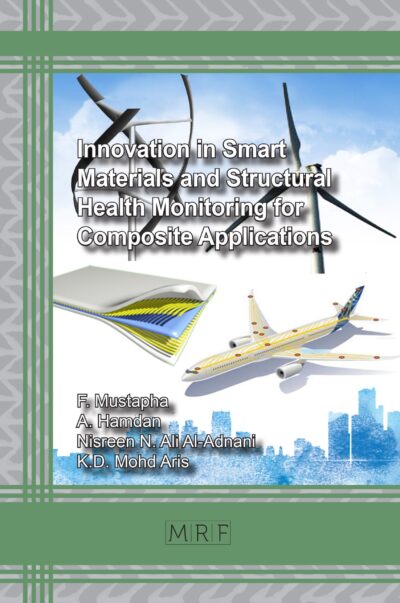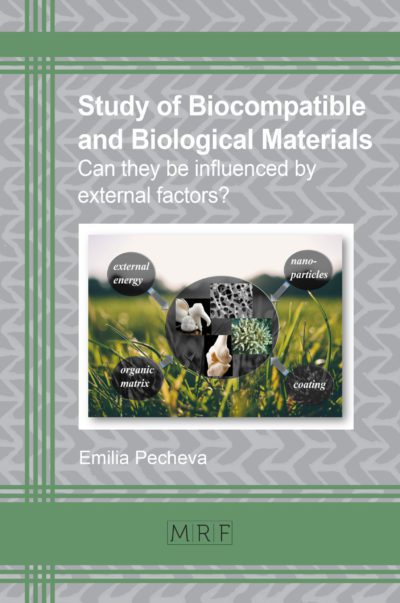Elemental Graphene Analogues
D.J. Fisher
Materials Research Foundations Volume 14
Publication Date 2017, 384 Pages
Print ISBN 978-1-945291-30-2
ePDF ISBN 978-1-945291-31-9
DOI: 10.21741/9781945291319
One of the greatest revolutions in materials science in recent years has been the literal renaissance of age-old materials in new and unexpected guises and possessing correspondingly astounding properties. There was once a time, for instance, when textbooks declared that only metals could offer any progress in superconduction. Since then, familiar perovskites – and even humble magnesium boride – have been recognised as being so-called ‘room-temperature’ superconductors. Carbon in particular has benefited from this revolution and has now found application as routinely deposited diamond coatings and as C60 ‘buckyballs’.
The most recent innovation has been the discovery and preparation of graphene; single-monolayer carbon having a remarkable strength. This success has naturally led researchers to ask whether other materials might also be prepared in an analogous monolayer form and offer similarly amazing properties.
The present monograph summarizes work carried out on such monolayer materials, with attention being restricted to those, like graphene, being composed of a single element. Most of the work done so far on these ‘elemental graphene analogues’ has been theoretical, but the existing experimental data suggest that they may well become as useful as graphene.
Keywords
2-Dimensional Materials, Antimonene, Arsenene, Bismuthene, Borophene, Chair Structure, Germanene, Indiene, Monolayers, Nano-Materials, Phosphorene, Silicene, Spintronics, Stanene, Tinene, Valleytronics, Zig-Zag Structure
Table of Contents
Introduction
Silicene 1
1.1 Mechanical Properties 6
1.2 Preparation and Structure 14
1.3 Composites 17
1.4 Substrate Interaction 19
1.5 Thermoelectricity 40
1.6 Thermal Conductivity 46
1.7 Magnetoresistance 50
1.8 Valley and Spin Phenomena 53
1.9 Magnetic Properties 65
1.10 Optical Properties 70
1.11 Electrical Conductivity 73
1.11.1 Superconductivity 77
1.11.2 Hall Effect 78
1.11.3 Semiconductivity and Band Structure 80
1.12 Surface Interaction 107
1.13 Defects 122
1.13.1 Line Defects 123
1.13.2 Point Defects 124
1.13.3 Stone-Wales Defect 128
1.13.4 Miscellaneous 131
1.14 Diffusion Processes 132
1.15 Applications 133
1.15.1 Transistors 133
1.15.2 Spintronics 138
1.15.3 Environmental Protection 141
1.15.4 Sensors 141
1.15.5 Gas Purification 143
1.15.6 Hydrogen Storage 143
1.15.7 Energy Storage 145
1.15.8 Catalysis 147
Germanene 149
2.1 Preparation 149
2.2 Structure 152
2.3 Mechanical Properties 155
2.4 Semiconduction and Band Structure 156
2.5 Substrate Interaction 158
2.6 Surface Interaction 163
2.7 Defects 170
2.8 Thermal Conductivity 171
2.9 Thermo-Electricity 172
2.10 Optical Properties 173
2.11 Composites 174
2.12 Applications 175
2.12.1 Solar Energy 175
2.12.2 Energy Storage 176
2.12.3 Catalysis 176
2.12.4 Transistors 176
2.12.5 Optical Devices 178
2.12.6 Spintronics 178
Stanene (Tinene) 180
3.1 Structure 181
3.2 Preparation 182
3.3 Mechanical Properties 182
3.4 Substrate Interaction 183
3.5 Surface Interaction 184
3.6 Superconductivity 186
3.7 Defects 188
3.8 Diffusion 189
3.9 Magnetism 189
3.10 Band Structure 189
3.11 Thermal Conductivity 192
3.12 Applications 193
Antimonene 195
4.1 Preparation 196
4.2 Composites 197
4.3 Substrate Interaction 198
4.4 Surface Interaction 199
4.5 Defects 199
4.6 Thermal Conductivity 200
4.7 Optical Properties 201
4.8 Semiconduction 201
4.9 Applications 201
Indiene 203
Arsenene 204
6.1 Mechanical Properties 205
6.2 Semiconduction 205
6.3 Composites 208
6.4 Surface Interaction 209
6.5 Magnetism 211
6.6 Thermal Conductivity 212
Phosphorene 213
7.1 Preparation 213
7.2 Structure 216
7.3 Mechanical Properties 217
7.4 Diffusion 221
7.5 Magnetism 222
7.6 Semiconduction and Band Structure 226
7.7 Surface Interaction 241
7.8 Substrate Interaction 246
7.9 Optical Properties 247
7.10 Defects 249
7.11 Composites 254
7.12 Superconductivity 256
7.13 Thermal Conductivity 257
7.14 Applications 259
7.14.1 Solar Power 259
7.14.2 Sensors 259
7.14.3 Catalysis 261
7.14.4 Energy Storage 262
7.14.5 Energy Harvesting 263
7.14.6 Thermoelectricity 264
7.14.7 Electronics 265
7.14.8 Biological 270
Bismuthene 271
Borophene 272
9.1 Structure 272
9.2 Defects 273
9.3 Mechanical Properties 273
9.4 Composites 275
9.5 Superconductivity 276
9.6 Magnetism 276
9.7 Applications 276
9.7.1 Energy Storage 276
9.7.2 Hydrogen Storage 278
9.7.3 Sensors 278
9.7.4 Catalysis 279
9.7.5 Biological 279
References
Keyword Index
ProtoView by Ringgold Clean Data
Fisher profiles some of the monolayer forms in other elements besides carbon that scientists have discovered (or predicted from computer models) during the half decade since graphene was experimentally fabricated. These include group-IV elements that yield silicene, germanene, and stanene (tinene), a group-V element that yields phosphorene, and transition-metal dichalcogenides. Scientists predict that group-IV monolayers will be topological insulators, and the transition-metal dichalcogenides will be useful for valleytronics, says Fisher, while monolayer materials generally can be used as field-effect transistors and play a key role in future nano-electronic devices. Annotation ©2017 Ringgold Inc. Portland, OR (protoview.com)
Ringgold Keywords
Monolayer materials, Graphene analogues, Group-IV elements, Group-V elements, Transition-meal dichalcogenides, Nanomaterials

















